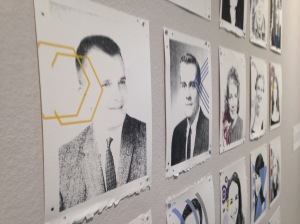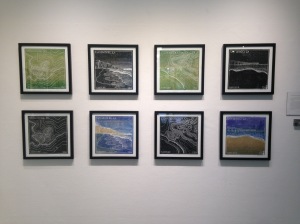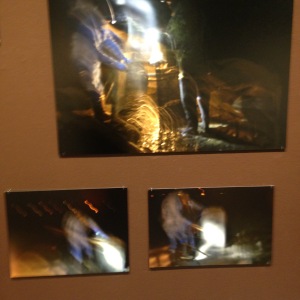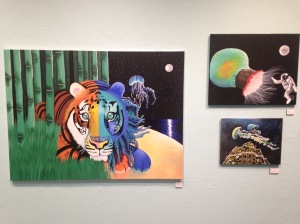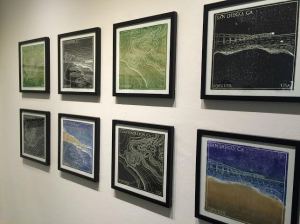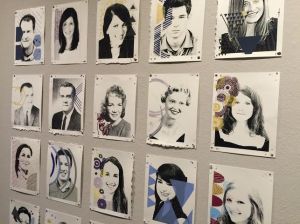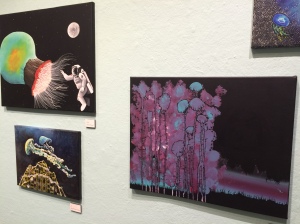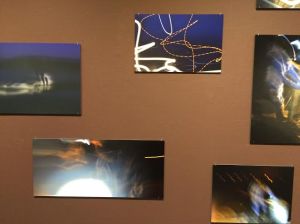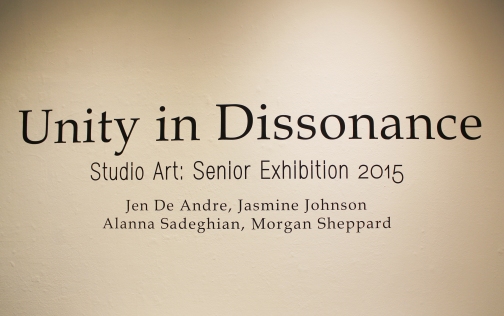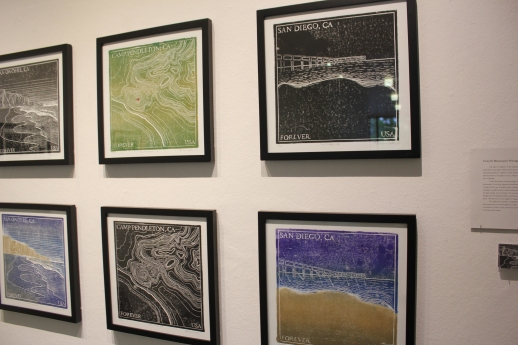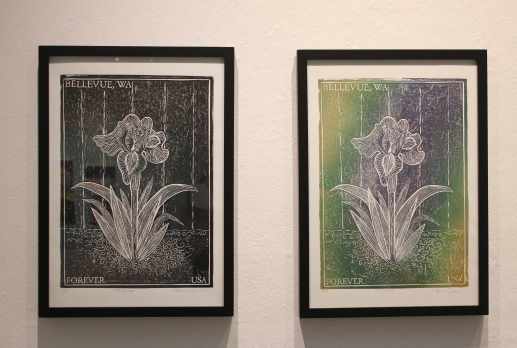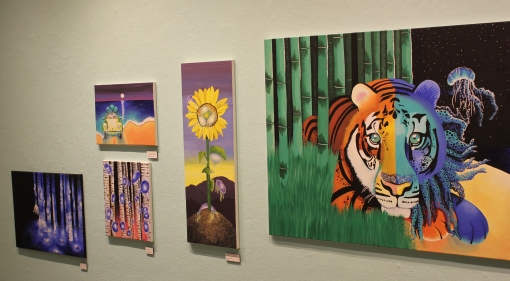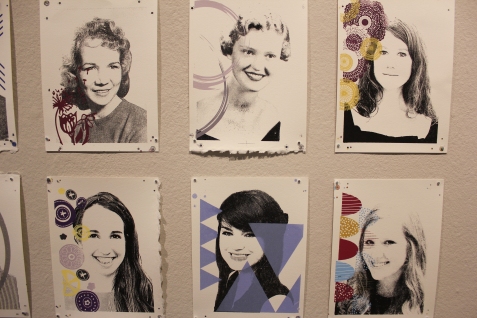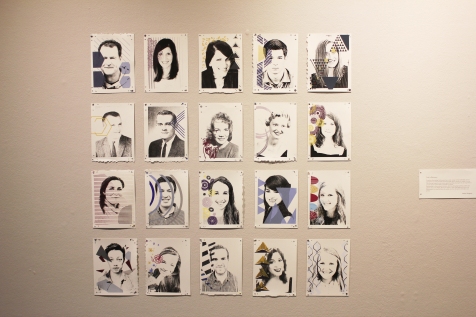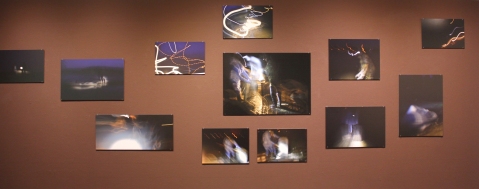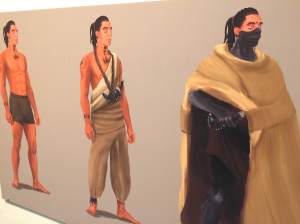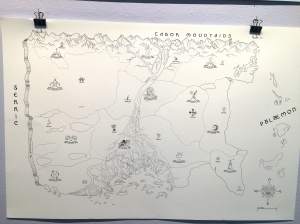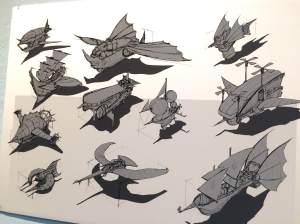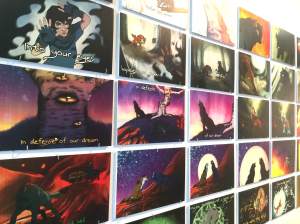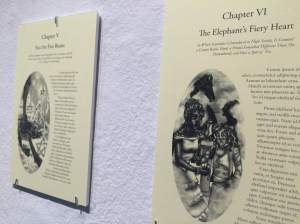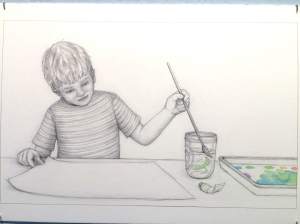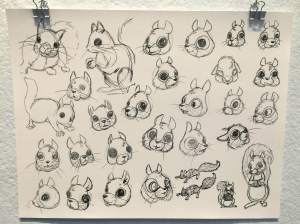The studio art show in the Seattle Pacific Art Gallery is made up of four graduating senior artist’s individual work. The whole show is titled Unity in Dissonance, yet the title does not seem to capture each student’s works into one net. The show contains two print makers, one painter, and one photographer. After viewing the show, I am left with each artist’s potential, yet this particular series of his or her repertoire either lacks originality in concept or proficiency in skill. Each student has a promising future as they continue to develop in their artistic professions.
Walking into the gallery, the most striking image of the show is Jasmine Johnson’s central image, a painted jungle tiger mixed with a fanciful aquatic cat titled Hybrid. While the piece is the most noticeable, it is not the best of Johnson’s paintings, lacking depth and intricacy. Johnson exhibit as a whole circles around a fantastical reimaginings of jellyfish in unexpected places. In her collection, her more abstract pieces are stronger than the flashy realistic paintings containing the tiger, a car, or a flower. A piece titled Up, for example, demonstrates a more interesting painting style, which shows fluid jellyfish swimming above a rock that is stylistically reminiscence of Oceanic art and has a with a textured ocean in the background. I would have liked to see more paintings done in the style of this piece, that mix painting techniques with subtle elegance, and less of the pieces that seem to try to tell a narrative.
Moving clockwise around the room, Jenell DeAndre’s is next, with a series of photographs of her family’s oyster farming operation. They are all taken during the night, many blurred with lights streaming across the image. I find it interesting that none of the pictures are fully focused and it gives me a sense of curiosity. However, while I can appreciate what De Andre is trying to achieve in creating pictures capturing motion and activity, I can’t get past my first impression that they look like snap-and-shoot photography in low lighting. I am left wanting more. It would be interesting to redevelop this concept as a video experience or with sound along with the images.
Allana Sadeghian’s exhibit is strongest and most professional of the show. She offers a series of ink prints that look like stamps for places in Washington State. There is one black and one color for each image. Sadeghian’s pieces are well produced. While the images are not completely original in style, it is interesting that she created them to look like postage stamps that further emote a sense of place.
Morgan Sheppard’s, exhibit contains a series of ink printed pictures of people who are meaningful to her with designs overlaid representing each person. Sheppard’s concepts contain personality and spunk, yet the presentation leaves something to be desired. This would be an interesting concept to develop further, perhaps with more emphasis on the designed interpretation of each person and a more polished display of the pieces.
Amanda Erickson

